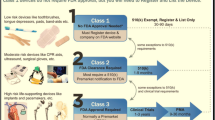Abstract
Excipients have always been a key input into pharmaceutical products, profoundly affecting product quality. Currently, most of our knowledge of excipient critical quality attributes is empirical, gained through experience, and shared through publications and other sources. The behavior of excipients is complicated, with many different failure modes that depend on the type of dosage form. Even within the same dosage form, there can be multiple failure modes depending on the manufacturing method. This complex behavior creates many possible combinations to assess when designing a formulation or evaluating regulatory submissions. Formulation science could be improved if data from different sources could be made widely available through an interactive system using a consistent, structured format to help formulators and regulators assess the risk of excipient usage for a particular dosage form with a particular manufacturing method. This paper describes a decision support system that was created for assessing excipient risk in different types of formulations and considering different types of manufacturing methods, dosage forms, and excipient functionality. The Excipient Risk Assessment System consists of a database that stores knowledge about factors that affect formulation design and a decision support processor that manages selections for creating formulation scenarios and assigning risk. Formulation and risk assessment data are provided by formulation science experts. This enables the system to assess compatibility among excipients, functionality, dosage forms, and manufacturing methods selected for formulations. The interface guides users through the creation of formulation scenarios and displays customized, interactive risk assessment reports for users to search and explore.











Similar content being viewed by others
References
Fahmy R, Kona R, Dandu R, Xie W, Claycamp G, Hoag SW. Quality by design I: application of failure mode effect analysis (FMEA) and Plackett-Burman design of experiments in the identification of “main factors” in the formulation and process design space for roller-compacted ciprofloxacin hydrochloride immediate-release tablets. AAPS PharmSciTech. 2012;13(4):1243–54.
Claycamp HG, Kona R, Fahmy R, Hoag S. Quality-by-design II: application of quantitative risk analysis to the formulation of ciprofloxacin tablets. AAPS PharmSciTech. 2015:1–12.
Kona R, Fahmy R, Claycamp G, Polli J, Martinez M, Hoag S. Quality-by-design III: application of near-infrared spectroscopy to monitor roller compaction in-process and product quality attributes of immediate release tablets. AAPS PharmSciTech. 2014:1–15.
Ganesan A, Barakat K. Solubility: a speed–breaker on the drug discovery highway. MOJ Bioequiv Availab. 2017;3(3):56–8.
Mitra A, Kesisoglou F. Impaired drug absorption due to high stomach pH: a review of strategies for mitigation of such effect to enable pharmaceutical product development. Mol Pharm. 2013;10(11):3970–9.
McLennan M, Kennell R. HUBzero: a platform for dissemination and collaboration in computational science and engineering. Comput. Sci. Eng. 2010;12(2):48–53.
Catlin AC, HewaNadungodage C, Fernando S, Bejarano A, Desigavinayagam P, Patil O, editors. Fully integrating data with compute workflows: a platform to better serve scientific research. Gateways: the 13th gateway computing environments conference; 2018.
Catlin AC, HewaNadungodage C, Pujol S, Laughery L, Sim C, Puranam A, et al. A cyberplatform for sharing scientific research data at DataCenterHub. Comput. Sci. Eng. 2018;20(3):49–70.
NIPTE-FDA Excipients risk analysis tool. [Internet]. 2017. Available from: https://pharmahub.org/excipient-risk-analysis. Accessed 8 Dec 2018
Wang T, Alston KM, Wassgren CR, Mockus L, Catlin AC, Fernando SR, et al. The creation of an excipient properties database to support quality by design (QbD) formulation development. Am Pharm Rev. 2013;16(4):16–25.
Bejarano A, HewaNadungodage C, Wang F, Catlin A, Hoag S. Decision support for excipient risk assessment in pharmaceutical manufacturing 2018 [Available from: https://pharmahub.org/excipient-risk-analysis. Accessed 8 Dec 2018
IPEC. The IPEC Risk Assessment Guide for Pharmaceutical Excipients, Part 1 – Risk Assessment for Excipient Manufacturers 2017 [Available from: https://ipec.org. Accessed 8 Dec 2018
Wikipedia. Failure mode and effects analysis. 2019.
ICH. International Council for Harmonization of Technical Requirements for Pharmaceuticals for Human Use [Available from: https://www.ich.org/home.html. Accessed 8 Dec 2018
Codd EF. Further normalization of the data base relational model. In Data Base Systems. In: Rustin R, editor. Courant Computer Science Series. 6. Englewood Cliffs, N.J.: Prentice-Hall; 1972. p. 33–64.
Hoag SW, Augsburger LL. Pharmaceutical dosage forms: tablets. 3rd ed. New York: Informa Healthcare; 2008.
Sheskey PJ, Cook W, G., Cable CG, editors. Handbook of pharmaceutical excipients. London UK: Pharmaceutical Press; 2017.
Augsburger LL, Hoag SWH, editors. Pharmaceutical dosage forms: capsules. Boca Raton: CRC Press; 2018.
Food and Drug Administration US. Extended release solid dosage forms: development, evaluation and application of in vitro/in vivo correlations. In: FDA, editor; 1997.
Oka S, Smrčka D, Kataria A, Emady H, Muzzio F, Štěpánek F, et al. Analysis of the origins of content non-uniformity in high-shear wet granulation. Int J Pharm. 2017;528(1):578–85.
Acknowledgments
The authors gratefully acknowledge NIPTE (grant number: NIPTE-U01-MD-2017-001) and the FDA for the financial support of this research.
Author information
Authors and Affiliations
Corresponding author
Additional information
Guest Editors: Ajaz S. Hussain, Kenneth Morris, and Vadim J. Gurvich
Publisher’s Note
Springer Nature remains neutral with regard to jurisdictional claims in published maps and institutional affiliations.
Rights and permissions
About this article
Cite this article
Bejarano, A., Hewa Nadungodage, C., Wang, F. et al. Decision Support for Excipient Risk Assessment in Pharmaceutical Manufacturing. AAPS PharmSciTech 20, 223 (2019). https://doi.org/10.1208/s12249-019-1440-x
Received:
Accepted:
Published:
DOI: https://doi.org/10.1208/s12249-019-1440-x




